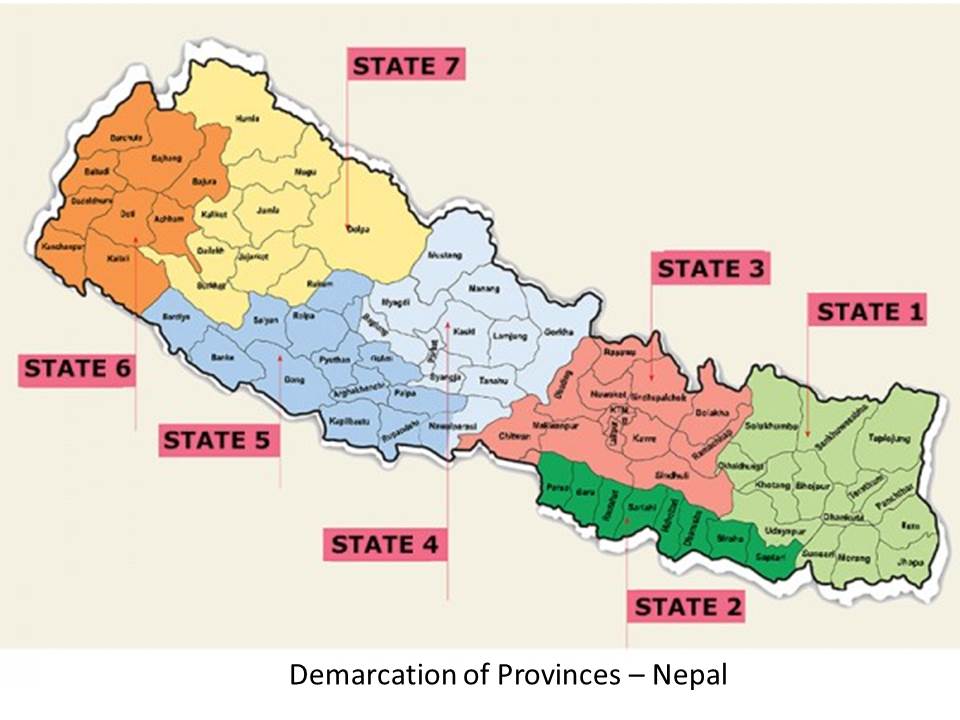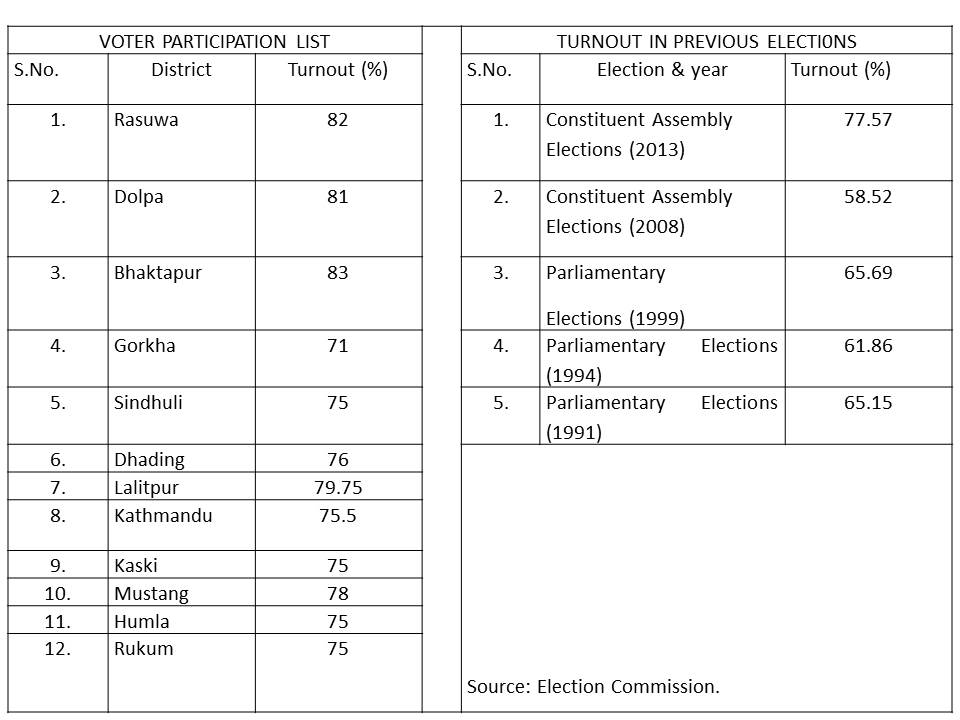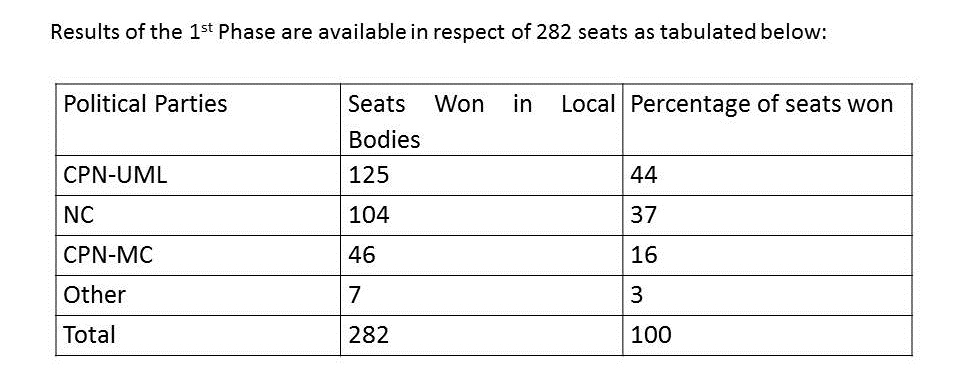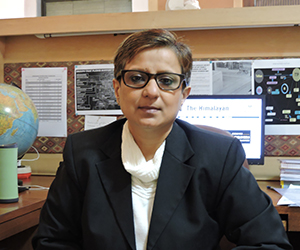Nepal appears jubilant at the success of the completion of the local level elections. The fervor seems to be nationwide primarily because elections were held after two decades. The country definitely views this as a landmark development in its quest for sustainable transition to parliamentary democracy, in a peaceful manner. Having successfully completed the first step in the process of transition, the country now has to climb the next two equally if not more significant phases of holding provincial level elections and finally the parliamentary elections. Both these, as per the provisions of the new constitution, have to be completed before January 2018.
Before examining the political significance of the local level elections, it is imperative to study the political indicators thrown up in the two phases of polling held on May 14 and on June 28, 2017.

1st Phase of Local Level Elections
The 1st phase of the local elections were held on Sunday the 14 May, 2017 for 282 of 283 local seats of 34 districts in Provinces 3, 4 & 6. Voting was peaceful and enthusiastic with massive participation. Rasuwa saw the highest turnout at 82% whereas Ramachhap saw the lowest participation. Bhaktapur, Gorkha and Dolpa saw a high percentage of over 80%. An estimate of 4,956,925 registered voters, participated in the 1st phase of election. Election Commission put the voters turn out at over 73% (1).


Clearly, Communist Party of Nepal-(United Maoist Leninist) or CPN-UML has done exceedingly well followed by Nepali Congress (NC), while the shrinking voter support for the Maoists, as seen in the Constituent Assembly-2 elections, and has once again been exposed.
Most important political leaders described elections as a historic success and a step towards the implementation of the new Constitution. On the platform of the 1st local election, the leaders urged all concerned to resolve all contentious issues through mutual dialogue and cooperation. Nanda Bahadur Pun regarded the election as the pillar to lead the nation towards prosperity and strengthen democracy in the country. Nepali Congress leader Gagan Thapa claimed that this vote had guaranteed the success of the second phase as well. The confusion/uncertainty over provincial and federal polls has also been set to rest, he added. Senior Communist Party of Nepal-Maoist Centre (CPN-MC) leader Narayan Kaji Shrestha also voiced similar opinion over the success of the 1st phase of voting. Nepali Congress General Secretary Prakash Man Singh believed that the overwhelming people participation would further inspire the people of Tarai to make the second phase of polls a success too. Rashtriya Janata Party of Nepal (RJPN) leader Keshav Jha claimed that his party would join the June 28, 2nd Phase elections even if the parties confirm in writing to amend the constitution later. With RJPN’s participation, there is no doubt over the holding of the 2nd round of elections since the Sanghiya Samajbadi Forum (SSF), another agitating party, is already in participation for the next polls.
Developments between the 1st and 2nd Phase of Elections
The then Prime Minister Prachanda, set the stage by ensuring smooth change of leadership, respecting a gentleman’s agreement reached between the NC and the CPN-MC, and tendering his resignation on May 24(2). Prachanda’s quitting is extremely unusual since in the past all agreements, ideologies and principles were sacrificed to remain in power. Over the past decade of political transitioning, power equations used to be constantly re-arranged to this end. The popular notion was that in Nepali politics nothing really changed except the occupants of the prime ministerial chair. In this background, willingness of the Maoist Chief to step down from office in deference to an agreement reached at the time he took over, was therefore extremely unusual. It may be recalled that the CPN-UML had earlier requested Dahal to resign only after the completion of 2nd phase of local level elections slated for June 28.
This paved the way for NC leader Sher Bahadur Deuba to get elected as Prime Minister, bringing in continuity and stability. Besides Dahal’s CPN-MC, Rashtriya Prajatantra Party (RPP), RJP-N, SSF, Nepal Loktantrik Forum (NLF) and the CPN (Samyukta) among others, also backed Deuba’s elevation as PM(3). Dahal’s term will be remembered for a number of accomplishments; the biggest being the successful holding of the 1st round of the local level elections with a credible 73% voter turnout. This indeed set the way for the smooth turnout for the 2nd round of election in the Tarai. Subsequently it shall go a long way for the provincial and thereafter the general elections of 2018.
Nepal’s relation with India which were at an all-time low due to various developments during the tenure of his predecessor K P Oli. During his key visit to India, Prachanda sorted out most of these irritants and assured New Delhi of protecting Indian interests in Nepal. He also tried his best to deliver on his promise of political inclusion for all citizen by amending the constitution. That he could not fully execute this agenda was mostly on account of the role and attitude of the main opposition party, the CPN-UML(4).
Prime Minister Sher Bahadur Deuba’s priorities included holding of the 3 levels of elections starting with 2nd phase of the local level elections and provincial polls followed by election to the National Assembly, all before January 2018. He also has the responsibility to secure endorsement to the Constitutional Amendment Bill that would address the demands and aspirations of the agitating Tarai-based citizens(5). Conducting the 2nd level of elections was a tough task for the new Prime Minister who acknowledged his areas of concerns as developing effective local governance by empowering local bodies, expediting reconstruction of the earthquake disaster, attracting the foreign and national investors in the economic development of Nepal and lastly, completing the transitional justice procedure and the successful handling of the peace process.
Deuba amended the local level elections Act on June 8 to accommodate the non-participating parties of Madhes. However, the disenchanted RJP-N leaders stated that “This amendment is not sufficient for our participation because it was not our major condition”. It may be recalled that an amendment to the Constitution to address the concerns of the Madhesis has been listed in the parliament. Deuba government faced difficultly in conducting the 2nd phase of elections as it was impossible for the amendment bill to be passed which required 2/3 majority in the Parliament. The desired amendment proposes to re-delineate the borders of Province 5 and add a number of local government units in proportion to the population in Southern plains.
The unyielding stance of the main opposition the CPN-UML made the meeting of numbers of parliamentarian required for passing the amendment Bill almost impossible. CPN-UML leader KP Sharma Oli insisted that government should not increase the number of local levels in Tarai. Yet, on May 22, government decided to increase 22 local level units in Tarai which could have brought in RJP-N to participate in the polls. If all other demands were met by the government, the Gathbandhan leaders could have sought a political agreement from leaders of ruling CPN-MC and NC ensuring an amendment to the Constitution before the polls. But that was not to be.
2nd Phase Local level Elections
Despite all these problems and impediments, Deuba government went ahead with the second phase of local level elections on June 28 in 28 of the 35 districts in Provinces 1, 5 and 7 in spite of severe opposition from RJP-N. Elections in Province 2 were deferred to September 18. This time around, polling was marred by sporadic disturbances. Severe monsoon also caused disruption in a few areas. The Election Commission estimated 70.50% voter turnout, slightly less than in the previous round. The turnout in the Madhesi dominant areas was not that high. Only 2 votes were cast in the province of Nawalparasi.

As can be seen from the above, even in the 2nd phase, CPN-UML candidates stole a clear march over the NC by winning 151 units as against the latter’s 122. Similarly, as in the 1st phase, CPN-(MC) again performed poorly by winning only 38 local units seats to remain at the 3rd position. Other fringe parties and independents made up the rest by claiming 23 units. (6).
Taken together, the result of the two phases underscore the emergence of CPN-UML as a stronger political entity, winning 276 local bodies out of 616 units that were on offer, leaving the grand old party (NC) behind at 226 units. The third important party, CPN-(MC) led by Prachanda, came a poor third, winning only 84 local bodies. The Rashtriya Prajatantra Party ended up with a meager 5. It may be mentioned here the elections to the local bodies in Province No. 2 are yet to be held; tentatively fixed for September 18, 2017. It may also be mentioned that most of the Madhes-based parties had boycotted the local bodies elections on account of non-fulfillment of their demands relating to changes in the constitution.
The main opposition party, CPN-UML surprised the ruling NC –NCP-(MC) alliance by winning around 45% of the local bodies followed by NC with around 36% and CPN-MC mustering only around 14%. The rest went in favour of the fringe parties (25 Units) and RPP 5. Analysts believe that CPN-UML out-scored the others, primarily due its better organizational efforts, though the strong anti-India platform adopted by UML led coalition government of K P Sharma Oli, did significantly contribute to its success.
Conclusions, Analysis and Challenges
The most significant conclusion to be drawn for the two phases of polling is that the people in the hills and plains alike have reposed faith in the democratic process. This augers well for Nepal’s new experimentation with the system of constitutional democracy. Despite calls for electoral boycott, voters turned out in very large numbers to cast their votes. The poll process also indicates that Nepal has moved ahead from the Peace process that started in 2006 with the people expressing tremendous desire for fast and major transformation in the political dynamics of the country.
However, a section of political class and the makers of public opinion are of the view that the significant high voter turnout should not be necessarily interpreted as wide acceptance of the constitution in its existing form. Tarai continues to reel under severe discontent. Despite anger people came out to vote to reiterate their commitment to the democratic process but the government, indeed the political parties, will have to continue to find ways and means to address the demands and aspirations of the people who justifiably feel ‘excluded’ and denied a fair deal.
Another major take-away from the elections was the near exemplary role played by the government officials and institutions notably the Election Commission, the security forces, political parties, journalists, observers and volunteers for successfully conducting the polls in a peaceful manner. This should set the trend for the next two important phases of the democratic process i.e. provincial and national elections to be completed within January 21, 2018. One aspect of the security management that needs to be looked into is the deployment of the army which has not gone down well with at least a section of the civil society(7).
Apart from these, the major aspect of study of the local level elections, should be the political messages that the electorate has sent out to the political parties. Very obviously, the main opposition party CPN (UML) has a lot to cheer about(8). It has silently and consistently made best use of its political manipulations through Constituent Assembly-1 and Constituent Assembly-2 (CA-1 and CA-2) to improve its electoral support base from number four position in CA-1 to 2nd largest party in CA-2 and now as the largest group in the local level elections. And while so doing, it has widened its electoral reach across the hill districts and the plains alike. In the earlier stages, the party gained largely by strengthening its cadre base but in the latest round, it additionally cashed upon the massive ‘nationalist’ (read anti-India) agenda it had set in motion during the tenure of K P Sharma Oli’s prime minister ship. This might have worked at the tactical level but will remain, in the long run a questionable strategy.
The election results should cause deep worries to both the NC and the Maoist. The latter particularly should be doing some serious introspection on how, so fast, they have managed to slide down from their preeminent position in CA-1 to number 3 in CA-2 and now ended up with only around 15% of the seats on offer. While internal strife within the party with the departure of Baburam Bhattarai and the intractable attitude of the hardliners like Mohan Baidya could be significant factors that could be addressed only through negotiated unification efforts, what the Maoists need to introspect upon seriously is the perceived disconnect between its policies and the peoples aspirations.
In a similar manner, the grand old party of Nepal, the NC, too needs to work on the unending factional feud it suffers from at virtually all levels. In their case the divide is hardly driven by ideological differences: it’s purely personality based factionalism. Unless they quickly realise and address this infirmity, there could be more surprises for the party in the next two phases of the elections i.e. the Provincial and Parliamentary election to follow over the next 5/6 months. Fortunately for the NC and its leader Deuba, the power of governance is likely to stay will be in their hands during this period. The present government should have learnt a lesson or two from the wasted opportunities during Sushil Koirala’s stewardship and focus on providing dynamic leadership to bring about significant and visible changes in area impacting the lives of the common people. Unfortunately, Deuba does not have much time to do this, yet try he must.
The local level election results have a message for the Madhes based party as well. That message actually emanates for the fact that the Madhes based parties had emerged as a significant political grouping in the CA-1 elections, together contributing more than 140 elected representatives. In practical terms, as a group they were the ‘kingmakers’ and every coalition configuration had to look for their support to form the government in Kathmandu. This came about only on account of the extent of political unity then worked out by the leaders of the various factions.
That level of unity, they could not maintain in the elections to the 2nd CA and their numerical strength came down drastically; and with that their political bargaining clout. The decision of some of the Madhes based parties to contest the elections at late stage and of other to stay away from it, damaged their chances to show their effective political strength in dominant districts of the Tarai. As a result, the total number of elected Madhesi representatives in the two phases of the local level polls, is almost infinitesimal/insignificant. There is an obvious need for the Madhes based parties to reevaluate their strategy for the Provincial and national level election that are due over the coming six months. They could even start their efforts to test the waters as it were, for the 3rd phase of the local level election to Province 2, scheduled for September 18, 2017.
The perceived dominance of major parties as reflected in the election results is assessed by political observers as a step toward bring in desired stability in Nepali politics. But a major pitfall of such dominance of the larger parties might lead to greater marginalization of the minorities and ethnic groups whose aspirations need to be addressed for evolving an inclusive socio-politico-economic order in the country. Another fear of perceived dominance of major parties is possible entrenchment of patronage networks at the local level from where party supporters accesses state benefit while the unaffiliated do not get their share. This problem could deepen following the local level elections.
Another notable feature of this election has been the entry of women and members of marginalized community finding themselves a place in the political system of the country. The new Constitution shall offer local government significant control. It should empower them with 22 exclusive rights including the right to collect taxes to provide education and other civic amenities like health and drinking water. The positive takeaway of these local level elections shall be that the local governments shall enjoy the constitutionally ensured executive, legislative and judicial authority. The polls will have the effect of taking the Singha Darbar to the people’s doorsteps through which true devolution of the state power could become an eventual reality. With the polls, the Constitution has now entered the implementation phase. Polls at all the three levels of state structures federal, provincial and local levels are inevitable and important components of the entire process. . But the plausibility of actual empowerment is conditional on the principles and methods employed to determine the number and jurisdiction of state and local levels and thereby its functionality.
The newly elected members and the members of the Civil Society have to come on a traditional platform which speaks for the cause of grass root democracy. Local level elections have proved a step towards decentralization and making the local bodies more autonomous and accomplished. Promises made must be remembered while amending the Constitution. To say in Dahal’s words “Now it is time to right all the wrongs and make sure the entire country emerges victorious”. Together with the high-powered bureaucracy, the major emphasis should be on empowering the local units to the hilt including a wide section of population also to play a vital role in the country’s governance(9).
The challenges before the Deuba led coalition government are many. To start with, having completed the local level elections (except in Province 2), the government machinery will have to work out a sustainable structure for devolution of powers and responsibilities. Immediately or concurrently, work must also start on holding provincial election followed by the national parliamentary elections which will carry the additional feature proportional representation (PR) component, which, it may be recalled, gave the RPP a strong presence in Kathmandu in the 2nd CA elections. The Proportional Representation system coupled with reservation of seats could benefit smaller parties whereas the First-Past the Post (FPTP) system traditionally favour the major parties(10). In between, PM Deuba will also have to lean heavily on his political skills to garner the required across the board support for the pending constitutional amendments to bring back those elements in to the political mainstream, who have been agitating for inclusion and fair play.
End Notes
Nation holds local polls in 20 years, The Kathmandu Post. 15th May, 2017.
2 Prime Minister Dahal announces his resignation while addressing the nation, The Himalayan Times. 24th May, 2017.
3 Why Prachanda’s quitting is unusual in Nepal politics, Yubaraj Ghimire, The Indian Express. 25th May, 2017.
4 Mixed legacy – Editorial, The Kathmandu Post. 26th May, 2017.
5 Cabinet meeting catalogues priorities, The Kathmandu Post. 8th June, 2017.
6http://english.onlinekhabar.com/wp-content/uploads/2017/07/leading party_Province-157-2.jpg.
7 Poll lessons - Editorial, The Kathmandu Post. 29th June, 2017.
8 The Long Road – Editorial, The Kathmandu Post. 6th July, 2017.
9 Mixed legacy – Editorial, The Kathmandu Post. 26th May, 2017.
10 The Long Road – Editorial , The Kathmandu Post. 6th July, 2017.
Image Source: https://www.electoralgeography.com/new/en/countries/n/nepal/nepal-constutuent-assembly-election-2008.html











Post new comment